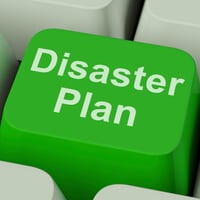The Top 6 Twitter Tips and Tricks to Help You Increase Your Followers
Twitter can help you connect with customers, prospects, and other businesses. Twitter also enables you to track industry news, product introductions,...
1 min read
Lance Stone : Apr 23, 2014 11:48:17 AM
 No matter what kind of business or organization you run, you need effective and secure technologies to access, process and share information. You may believe that you are doing everything possible to ensure your IT is up to date, stored securely offsite, and is on hand when you need it. But are you really doing everything you can do to ensure your business survives a disaster?
No matter what kind of business or organization you run, you need effective and secure technologies to access, process and share information. You may believe that you are doing everything possible to ensure your IT is up to date, stored securely offsite, and is on hand when you need it. But are you really doing everything you can do to ensure your business survives a disaster?
Here are four important questions you should ask:
Can you answer these questions? Most small to mid-sized businesses don’t have the expertise in-house to properly confirm that these essentials are covered. {company} can help. For a complimentary, no-obligation disaster recovery assessment call {phone} or email us at {email}.


Twitter can help you connect with customers, prospects, and other businesses. Twitter also enables you to track industry news, product introductions,...

When looking for a victim, cyber criminals will go after small businesses that lack security controls. Hackers don’t want to go after the big...

Have you heard about Heartbleed?

On Time Tech is an IT Support and Computer Services company serving California. We provide services to the areas in and around We know businesses like yours need technology support in order to run highly-effective organizations. Leverage pro-growth technology services for your company now.
© 2025 On Time Tech